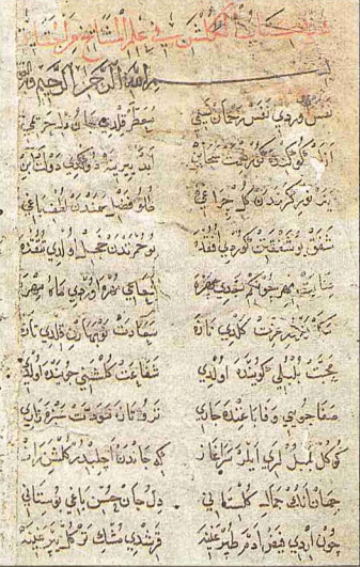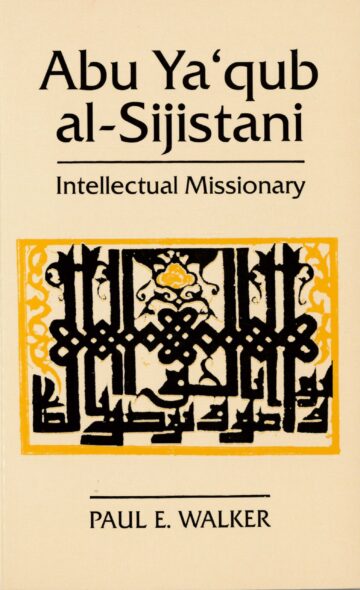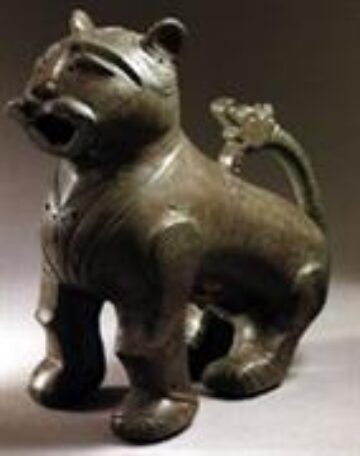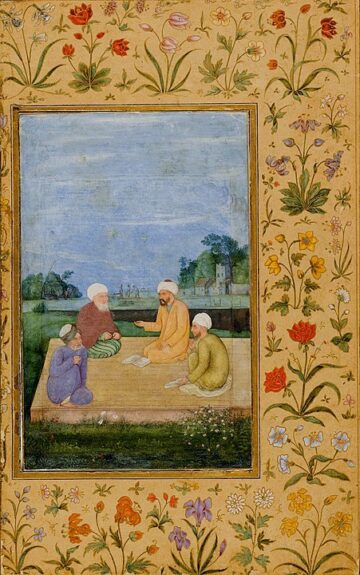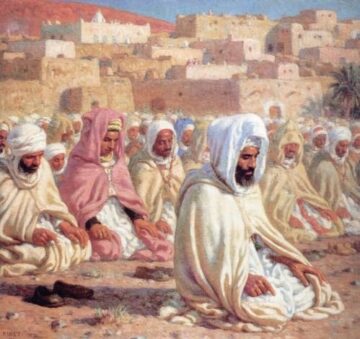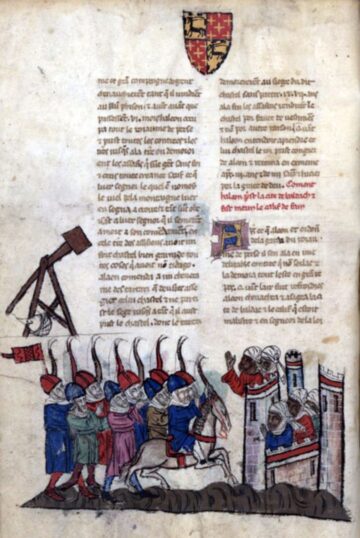Keywords: Ka‘ba, Mecca, bayt Allah (House of God), masjid al haram (sacred mosque), Prophet Muhammad, Islam, haram, pilgrimage (hajj), umra (minor pilgrimmage), pilgrim, worship, Black Stone (al hajar al aswad), tawaf, Well of Zamzam, Abraham (Ibrahim), Hagar, Ismail (Ishmael), Abrahamic tradition, maqam, qiblaThe direction of Muslim prayer towards the Kaʿba, indicated in a mosque by a niche called a miḥrāb..
The Ka‘ba
The structure and its immediate precincts in Mecca that also house a large mosque are referred to in the Qur’an and subsequently in Muslim tradition as the House of God (bayt Allah) and the sacred Mosque (masjid(mosque; pl. masajid) Arabic derived from the root s-j-d, meaning ‘to prostrate’. In the early Islamic era, the word masjid meant a place of prayer which could be any clean… al haram). The Ka‘ba is the point of orientation for Muslims when they pray, and it is also the focal point of the Pilgrimage (Hajj(Arabic; derived from the root ḥ-j-j), meaning ‘to betake oneself to’, also, occurs in other Semitic languages. The word Hajj usually refers to the annual pilgrimage by Muslims to the…) as well as the umra (minor pilgrimage).
The Hajj takes place over a fixed period in the prescribed month, whereas the umra may be undertaken at any other time. During pre-Islamic times, the Ka‘ba served as a shrine and a sacred space (haram). Arab tribes and others made annual pilgrimages to the site and visited it to honor tribal and ancestral deities that included several gods and goddesses. Representatives of these deities were kept in the Ka‘ba, and the ritual visits were often accompanied by music, dance, and the recitation of poetry.
Author

Professor Azim Nanji
Azim Nanji is currently Special Advisor to the Provost of the Aga Khan University, and a member of the Board of Directors of the Global Centre for Pluralism in Ottawa, a joint partnership between His Highness the Aga KhanA title granted by the Shah of Persia to the then Ismaili Imam in 1818 and inherited by each of his successors to the Imamate. and the Government of Canada. He has held many prestigious academic and administrative appointments, most recently as Senior Associate Director of the Abbasi Program in Islamic Studies at Stanford University, where he was also lecturer in the Department of Religious Studies. From 1998 to 2008, Professor Nanji served as Director of the Institute of Ismaili Studies in London.
Professor Nanji has published numerous books and articles on religion, Islam and Ismailism, including: The Nizari Ismaili Tradition (1976), The Muslim Almanac (1996), Mapping Islamic Studies (1997) and The Historical Atlas of Islam (with M. Ruthven) (2004) and The Dictionary of Islam (with Razia Nanji), Penguin 2008. In addition, he has contributed numerous shorter studies and articles in journals and collective volumes including The Encyclopaedia of Islam, Encyclopaedia Iranica, Oxford Encyclopaedia of the Modern Islamic World, and A Companion to Ethics. He was the Associate Editor for the revised Second Edition of The Encyclopaedia of Religion.
Within the Aga Khan Development Network, he has served as a member of the task force for the Institute for the Study of Muslim Civilisations (AKU-ISMC) and Vice Chair of the Madrasa-based Early Childhood Education Programme in East Africa. He served as a member of the Steering Committee of the Aga Khan Award for Architecture in 1998, 2001 and 2016.


